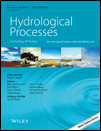Deriving hydrological signatures from soil moisture data
Soil moisture is an important variable in hydrological studies, but has been little used for model evaluation due to its high sensitivity to local conditions. We explore the possibility to derive hydrological signatures from soil moisture data that could overcome this limitation and be helpful for model evaluation. A set of eight hydrological signatures was built, encompassing long‐term to short‐term time scales. These signatures were tested according to robustness, representativeness and discriminatory power, using in situ data sets from New Zealand, including national network and experimental watershed data. Field capacity, type of soil moisture distribution, and starting dates of seasonal transitions typically meet the criteria, subject to uniform sensor depths and homogeneous land uses. Durations of seasonal transitions and event‐based signatures showed higher variability and lower discriminatory power. In general, long‐term signatures are more robust, more representative of large areas, and have a high discriminatory power, thus showing a good potential for use in diagnostic evaluation of regional models.

